Breaking down rotating mechanical equipment, systems, or mechanisms, component motions are key to their functions. For example, wind turbine blades rotate around the hub to generate electricity. What device or parts control and determine the required motion in a mechanical system or machinery? It's a mechanical bearing. Thus, various types of bearings with different shapes, sizes, or designs achieve this by enabling motion in only one fixed direction. Mechanical bearings also reduce friction between moving parts.
Only using the right bearing as per requirement leads to smooth and precise motions. Moreover, we'll discuss bearing uses, types, materials, and considerations for choosing the right one for your needs.

Contact between rotating metal parts can lead to rapid wear on the contact surface, which reduces the lifetime of machinery and poses a threat to operational safety. Therefore, a mechanical bearing placed on such joints or connections prevents direct contact and enables smooth motion, and the reason for this lies in the structure of the rolling element within the bearing. Generally, these rolling elements are in the form of balls or cylinders. They move in a rolling manner, and it is known that rolling is a process with lower friction compared to sliding. The mechanical bearing can either avoid or reduce the contact surface. It also ensures uniform load distribution. Moreover, it leads to reduced friction and less need for lubrication. Additionally, it boosts operational efficiency. Last but not least, it can handle heavy loads very effectively.
Magnetic bearings make use of electromagnetic force to rotate or suspend a rotor. The structure usually contains an electromagnetic field within the bearing, often with wound wires on ferrous material. When the field is activated, the force can levitate the rotor without touching the surface, allowing it to operate at extremely high speeds and loads. There are two main types of magnetic bearings.
Active magnetic bearings employ active control mechanisms along with integrated sensors and a feedback control mechanism to stabilize and control the position of the rotating shaft. They offer high precision in motion control and system stability, as well as minimal friction. However, they have disadvantages such as complex setup, high energy consumption, and thermal sensitivity. They are utilized in heavy industrial applications like turbochargers and machine tools, as well as in low-temperature operations and energy storage applications.
Passive magnetic bearings do not have an active system or feedback mechanism. Instead, the permanent magnets are arranged for levitation and control. They have the benefits of requiring less maintenance, being cheaper, having a simple design, and operating silently. However, they have lower load capacity and less control due to the absence of real-time feedback. They are suitable for situations like high-speed rotating conditions with moderate load and noise-sensitive environments, and also in compact devices such as miniature motors and actuators.
Roller bearings use rollers of various shapes like cylindrical, spherical, conical, or needle to transfer stress. The use of rollers instead of balls to increase the contact area for handling higher loads. The rolling of rollers enables the shaft's rotating load to be carried. Different variations of roller bearings support radial, axial, or combined loads and reduce friction.
Tapered roller bearings have a tapered inner race and outer race with tapered rollers, which can evenly distribute heavy axial loads and also handle radial loads. They have a compact design and can self-adjust misalignment, but have disadvantages such as complexity and relatively high cost. They are used in heavy equipment with high axial and radial loads like railway systems.
Spherical roller bearings have spherical rollers in two rows and can self-adjust angular misalignment. They are not suitable for high-speed applications but are used in misalignment-prone applications with heavy loads. Spherical roller thrust bearings have a similar structure to thrust ball bearings but with spherical rollers for unidirectional heavy axial loads and some radial loads. They allow misalignment and are flexible with operating speeds, used in industrial setups.
Cylindrical roller bearings can carry higher radial loads due to linear contact but also support a moderate axial force. They have one or multiple rows and have a large surface contact that increases the load-bearing limit but also the friction. They are used in high radial load conditions.
Needle roller bearings are similar to cylindrical roller bearings but with tiny rollers. They allow high speed and provide high radial-load support in a compact space, but have disadvantages like edge loading and higher friction. They are used in applications with variable loads.
Cross roller bearings have cylindrical-shaped rollers in a cross pattern, promoting rigidity and precision in handling axial and radial stresses, but have complex installation and misalignment risks. They are used for heavy radial loads and accurate motion control.
Plain bearings are the simplest kind of bearing. They don't have rolling elements and just have a cylindrical bore for the shaft or similar components, and are also known as sleeves or bushes. Their plain surface can stabilize heavy radial and axial loads while reducing friction. Using low-friction materials like brass or hard polymer is crucial for making them. These bearings can be both lubricated and dry. There are diverse configurations of plain bearings such as cylindrical, thrust washer, flanged, and sliding plates. They may also have features like grooves, holes, notches, or tabs on the contact surface to lower friction and meet application requirements.
The advantages of plain bearings are that they have a simple design and are easy to install. They are suitable for rotating, sliding, oscillating, and reciprocating motions. They can support heavy radial loads and moderate axial loads and have the characteristics of being lightweight, low-cost, quiet, and durable. They are applicable for both static and dynamic loads.
However, there are also some disadvantages. Plain bearings are only suitable for low to moderate-speed applications because they have higher friction compared to ball or roller bearings. They need more frequent maintenance and lubrication. And they have relatively low vibration and shock-absorption capabilities. Plain bearings are best used in low-speed and heavy-load mechanical operations where misalignment and oscillation are important issues, like in industrial cranes or agricultural machinery. They are also a good option for custom bearings when cost is a major consideration.
Fluid bearings utilize a thin layer of fluid, air, gas, or lubricant between the housing and rotatory surface, which prevents direct contact with moving parts. Hydrostatic and hydrodynamic are two prevalent types. Hydrostatic bearings operate on the principle of pressurized fluid, reducing friction and requiring external pressure.
The advantages of hydrostatic bearings include the ability to handle large loads, a long lifespan, excellent damping properties, and precise control. However, they also have disadvantages such as a complex setup, potential for leakage, and being energy-intensive. These bearings are suitable for rotary and liner motions in precision applications.
Hydrodynamic bearings make use of the journal to offer load support and low friction through relative motion. They have the benefits of not needing external systems and having a simpler design, but they also face challenges like difficulty in achieving the lubrication film at low speeds and being affected by surface imperfections. They are ideal for applications like pumps or turbines in the moderate to high-speed range and are also preferred in marine and industrial systems.
In a ball bearing, spherical balls are the rolling elements that can support both radial and axial loads between the two bearing races, with a retainer separating and evenly spacing the balls. These are usually made of roller-bearing steel or stainless 4401 and 14401 to transfer loads to the inner ring. There are different ball bearing types based on load direction, raceway design, function, and size to meet diverse application needs.
Deep-groove ball bearings have deep grooves in the inner and outer raceways, are versatile and suitable for applications like electric motors and gearboxes, can handle heavier loads, and are suitable for high-speed rotations, but are sensitive to misalignment.
Self-aligning ball bearings have a cage structure with two rows of balls, can self-correct angular misalignment, are good at shock and vibration absorption, but have higher cost and limited load capacity, and are used when there is misalignment possibility and for moderate speeds and loads.
Angular-contact ball bearings have balls transferring forces at a specific angle, can handle higher loads and high-speed operations, but have higher friction at higher contact angles, and are used when forces are combined and heavy.
Thrust ball bearings are simple and low-cost for axial loads, come in single and double-direction variations, can accommodate high-speed axial loads, are easy to install and cost less, but are limited to axial loads and prone to misalignment and ball skidding, and are used in thrust-bearing applications with dominant axial loads.
Miniature bearings are small-sized for small spaces and precision handling, have small designs for use in electronics and medical equipment, but have low load capacity and are vulnerable to contamination.
Thin-section bearings have a thin inner and outer race layer, can fit in minimal space, have a rolling element that could be a ball or cylindrical bar, have less weight but maintain accuracy and friction reduction, and are used in high-performance applications.
Flanged bearings have a flange on the outer race for strong attachment, are mainly for radial loads but can handle some axial stress, have limited load capability and the flange may interfere with other components, and are used for high speeds with low loads and excessive vibration.

Bearings play a crucial role in various machines, mechanical systems, and tools with rotating motions. They support the operating load and reduce friction, vibration, and noise, and are widely used in many fields.
Industrial Machinery and Equipment
Industrial machinery and equipment rely on different bearings and types for the smooth operation of rotating components, like cylindrical roller bearings for conveyor belts, angular contact ball bearings in milling, drilling, and turning machines, and thrust bearings in compressors.
Automotive
In the automotive sector, different bearings types are present in various sections and components, such as tapered roller bearings in the vehicle steering system, tapered and needle roller bearings in gearboxes, single or double-row ball bearings in wheel hubs, and spherical roller bearings in the suspension system.
Aerospace and Aviation
In aerospace and aviation, bearings are essential for safety, flight control, performance, and reliability. Examples include airframe bearings and self-lubricating bearings in landing gear, needle, and tapered roller bearings for the fuel pump, and spherical plain and angular contact bearings in propeller shafts.
Consumer Products
In consumer products, from washing machines and refrigerators to furniture items, various shapes and sizes of bearings can be found, such as ball bearings in bicycle hubs, sleeve bearings in the cooling fan, and roller bearings in treadmills, as well as in hand power tools like drills and grinders.
When choosing a metal bearing, the following factors should be considered:
Load Capacity: The load-handling capacity of the bearing is crucial. It should match the application's needs, like in heavy-duty appliances like washing machines or power tools which require high-capacity bearings.
Speed Requirement: Not all bearings support high speeds. Thin-section bearings support very low speeds while roller and deep-groove metal bearings can operate at high rotational speeds. Refer to ISO 15312 for suitable bearings.
Rotational Accuracy: This determines the bearing's ability to maintain a stable position and speed. Identify the allowable oscillations and find a bearing with sufficient accuracy. High accuracy is needed in some fields like aircraft control.
Radial Space: The available space matters. Choose a bearing that fits and doesn't interfere. Miniature and needle bearings are more flexible in space.
Operating Environment: Conditions like moisture, dust, chemicals, temperature, and stress affect the choice. List the scenarios and find a bearing that can operate efficiently.
Precision and Noise Requirements: Essential for electronic devices or audio equipment. Consider the noise level and ensure it suits the scenario. Deep-groove bearings have low noise.
To sum up, choosing the appropriate bearing demands takes into consideration a variety of factors. Through assessing the features of different bearing types, we strive to effectively handle your inquiries. Richconn is committed to providing all-around bearing and fastener solutions that are customized to the requirements of your project, offering a convenient one-stop service experience. In case you still have any perplexity about bearings and which one to pick, please feel free to reach out to us and ask about your project.
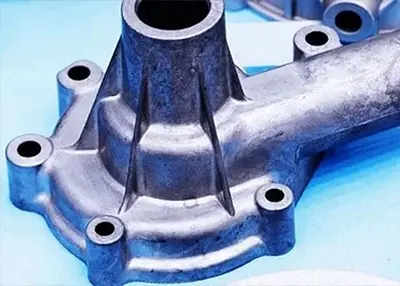 Casting Process| Exploring the 7 Types of Die CastingNovember 16, 2023Are you confused about which die casting method is suitable for you? Read this article and you will find the answer.view
Casting Process| Exploring the 7 Types of Die CastingNovember 16, 2023Are you confused about which die casting method is suitable for you? Read this article and you will find the answer.view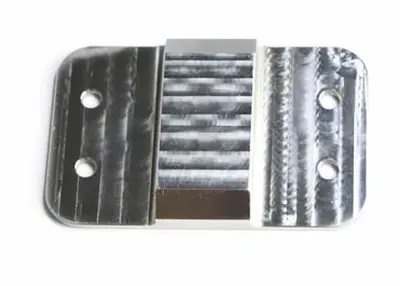 Choosing the Right Finish for Your CNC PartsSeptember 7, 2023From raw CNC machined parts to a final product that gleams with quality involves a crucial decision – selecting the right surface finish or treatment. Choosing the right surface finish or treatment f...view
Choosing the Right Finish for Your CNC PartsSeptember 7, 2023From raw CNC machined parts to a final product that gleams with quality involves a crucial decision – selecting the right surface finish or treatment. Choosing the right surface finish or treatment f...view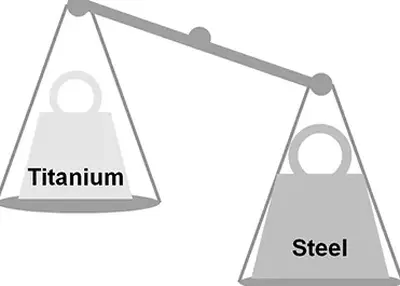 Titanium vs Stainless Steel: Choosing the Right Material for Your MachiningNovember 24, 2023Understand the differences between titanium and stainless steel and choose the best material for CNC machining.view
Titanium vs Stainless Steel: Choosing the Right Material for Your MachiningNovember 24, 2023Understand the differences between titanium and stainless steel and choose the best material for CNC machining.view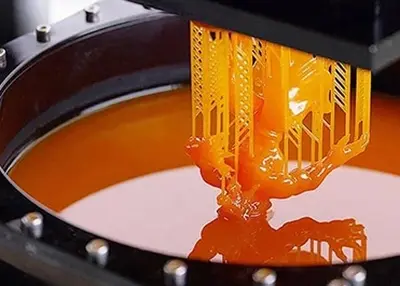 3D Printed Car Parts: All About 3D Printing in the Automotive IndustryMarch 1, 20243D printing for car parts caters to the personalization needs of many companies without compromising quality. Find out everything you need about 3D printed car parts here.view
3D Printed Car Parts: All About 3D Printing in the Automotive IndustryMarch 1, 20243D printing for car parts caters to the personalization needs of many companies without compromising quality. Find out everything you need about 3D printed car parts here.view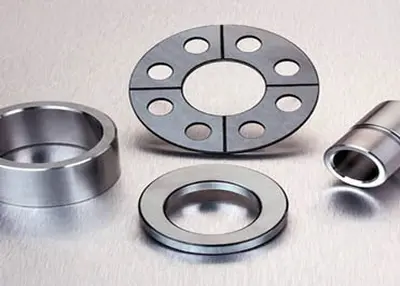 What Products Can Be Customized with a Five Axis CNC Machining Center?August 14, 2023A five-axis machining center is a highly technological, high-precision machine tool specialized in processing complex surfaces, and has a crucial influence on industries such as national aerospace, mi...view
What Products Can Be Customized with a Five Axis CNC Machining Center?August 14, 2023A five-axis machining center is a highly technological, high-precision machine tool specialized in processing complex surfaces, and has a crucial influence on industries such as national aerospace, mi...view How to Produce High-quality Parts With CNC?June 25, 2024The passage mainly talks about the production progress of high-quality parts with the help of CNC. It’s strongly recommended that Richconn is an effective company, which owns many technicians and advanced technology.view
How to Produce High-quality Parts With CNC?June 25, 2024The passage mainly talks about the production progress of high-quality parts with the help of CNC. It’s strongly recommended that Richconn is an effective company, which owns many technicians and advanced technology.view